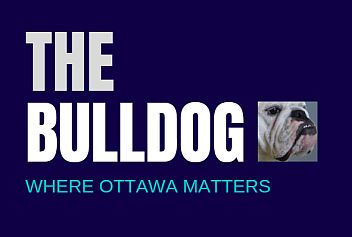Community ‘Fact Sheet’ Tears A Strip Off Lansdowne 2.0
Community Groups in Old Ottawa South, The Glebe and Old Ottawa East have produced a “fact sheet” for councillors as they prepare to vote on Lansdowne 2.0.
Many thanks to community activist John Langstone for sending this along:
Fact Check: Lansdowne 2.0
This is the most expensive project you will vote on this term of Council. Is this the City’s biggest priority? Do you have the financial transparency you need to make this decision?
Lansdowne 2.0 is not revenue-neutral
You’ve been told: “Although the City will spend $333M on Lansdowne 2.0 and take on upwards of $239M of new debt, it will not cost taxpayers anything”, like it is a fact. It is not. Taxpayers will shoulder significant risks, and be on the hook for large debt repayment if projections aren’t met.
City Learns Zip From LRT Inquiry, Lansdowne 1.0: BENN
Given the proposed new debt, Council needs to get the financial facts on Lansdowne 2.0.
A Half-Billion Dollars of Debt for Lansdowne
The City already has about $100M on the books from 1.0, and Lansdowne 2.0 will add another $239M if not more. Then there is $46M in guarantees of other Lansdowne debt, and the $120M retail loan. There is no credible plan for repayment; only the faint hope that “bricks and mortar” retail leasing and the Redblacks will make a fortune, when both face uncertain futures.
Air Rights are a minor source of revenue and won’t pay for the Project
One of the biggest myths: “the towers will pay for the project.” No, they won’t, not even close. A lot of focus is put on the sale of “air rights”. But they cover only a small fraction of project costs – 13% – leaving 87% of this project’s huge costs to come from much less reliable sources.
Property Tax Uplift (PTU) is Effectively Tax Diversion
PTU is not a real financing mechanism; no other municipality in Canada uses it, contrary to what City staff says. This opaque term masks a plan to use 90% of Lansdowne’s property taxes to fund new debt. Instead of new tax revenues going to cover the costs of city services like snow clearing, public transit and policing, they will go to repay the costs of the redevelopment, leaving other taxpayers to cover the costs of city services – in other words, a Lansdowne subsidy.
A Track Record of Financial Failure
Lansdowne 2.0 was designed to solve OSEG’s financial losses. Given the poor financial performance at Lansdowne to date, which returned $0 payments to the City (despite hundreds of millions spent and rosy revenue projections), why does it make sense to double down on a failed financial model? Why should OSEG be relieved of its responsibility to cover financial losses? Is this in the public interest?
A Lack of Financial Due Diligence
There has been no “deep dive” into Lansdowne financials because the scope of Ernst &Young’s due diligence mandate is too limited. There are three big problems:
• It is narrowly focused on OSEG’s Lansdowne 2.0 proposal rather than the City’s financial strategy including capital and operating budgets, debt servicing, and debt exposure.
• It artificially separates Lansdowne 1.0 and 2.0 operations and financial results. For example, it looks at the viability of adding 59K sq. ft. of retail rather than the viability of retail operations in total, or the overall profitability of the partnership in total.
• There is no assessment of performance to date. The questions of “why have results consistently fallen short of projections since 2014?” and “why should we expect anything to change in the future?” are not being asked.
City Priorities
The City doesn’t have enough to fund public transit, affordable housing or paramedics. Should it spend hundreds of millions right now to replace structurally-sound facilities that the World Hockey Juniors thought good enough for 2024? The proposed spend is about $17M per City Ward. While we’d all like brand new facilities, is this your community’s biggest spending priority?
How Will We Measure The Performance Of The Mayor?
Ten reasons NOT to support Lansdowne 2.0 as proposed:
1. Huge cost for taxpayers: $333M of City spending and $239M of City Debt
2. Not revenue neutral or even affordable: property taxes will be diverted, and 66% of debt repayment has no ready funding source
3. Not the highest City priority: The City can’t fund urgent needs – why prioritise this scale of taxpayer $$ spending at Lansdowne now?
4. Not informed without Auditor General results: The AG is starting an audit of Lansdowne, why decide before seeing the results?
5. Not enough transparency and oversight—much like the LRT problems
5. Not credible assessment of financial risks: the financial model is risky: a huge amount of City debt repayment depends on a dramatic turnaround of Lansdowne financial performance – specifically retail leasing and Redblacks.
6. Not legitimate planning: The City has gone from “a check in with Council and then staff will have robust consultations with residents” over a year ago, to shutting down public discussion of key concept elements as “so much work has already been done.”
7. Not addressing chronic transportation issues: universally-acknowledged transportation issues are being ignored
8. Not good for the environment: reduces green space, not carbon neutral, disturbs toxic soil
9. Not realistic about impacts of a new arena/sports and entertainment centre at Lebreton Flats: We are close to a decision on a new Lebreton arena, yet ignoring important impacts on Lansdowne of that development
10. Not responsible to spend now on luxuries over Ottawa’s urgent needs. The sports facilities are structurally sound – just ask the World Hockey Juniors who booked for 2024.
What’s the alternative?
• Preserve and repair the adequate facilities for now;
• Rethink an affordable, phased plan; and
• Take the time to get it right, with public support.
Prepared by the Glebe, Old Ottawa East, and Old Ottawa South Community Associations.
September 21, 2023
—
Don’t miss our regular features
Everything Ottawa Full Local Bulldog Canadian
Opinion Comments Breaking News
Ontario World Get Cheap Gas Big Money
Pop Gossip Your Home Relax …
Bulldog Weather Full Local Sports
Page 2 Page 3 Page 4 Page 5 Page 6





Add to this the interest cost for the debt over how many years with rates at an all time high in many years. Cheap money is not there and what of Ottawa’s debt rating now and should the project fail or even stumble.? This debt load is quite simply unafordable for the taxpayers of Ottawa!
Another myth is the 120 affordable housing units owned and managed by a non-profit housing provider. The winning developer proponent would still realize the full land value of the 120 units. The only way the units can remain ‘affordable’ is by the City writing down the equivalent amount of air rights revenue worth about $43.5 million in 2022 dollars, which means that the City will need to pick up the same amount in additional new debt funding.